What is hypertrophy?
Hypertrophy is the increase in the size of the parenchymal cells in an organ.
What causes hypertrophy?
Hypertrophy can be caused by increased functional demand or stimulation by hormones and growth factors. Essentially, when an organ is under stress or is stimulated to grow, the cells may respond by getting larger.
What are the two types of hypertrophy?
There are two types of hypertrophy – physiological and pathological:
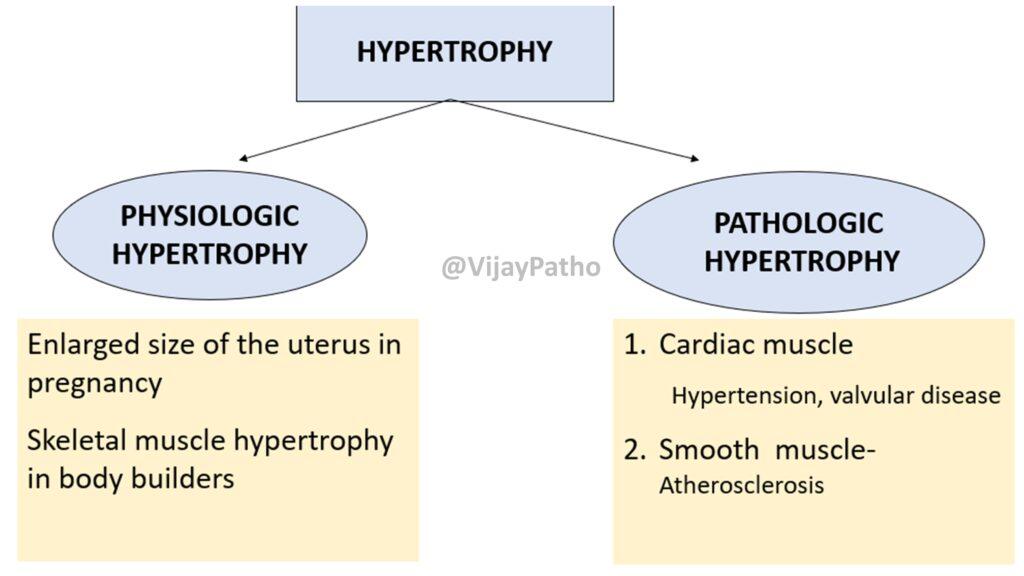
Physiological Hypertrophy occurs naturally under certain conditions, like the enlarged uterus during pregnancy or skeletal muscle hypertrophy in bodybuilders due to rigorous training.
Pathological Hypertrophy happens as a result of diseases or abnormal stimuli, such as cardiac muscle hypertrophy from hypertension or valvular disease and smooth muscle hypertrophy due to atherosclerosis.
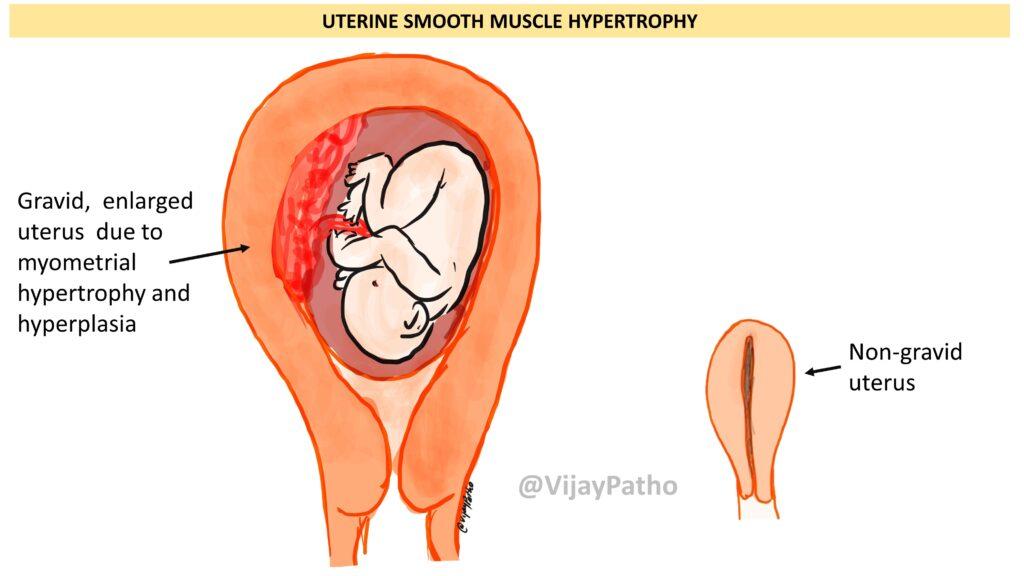
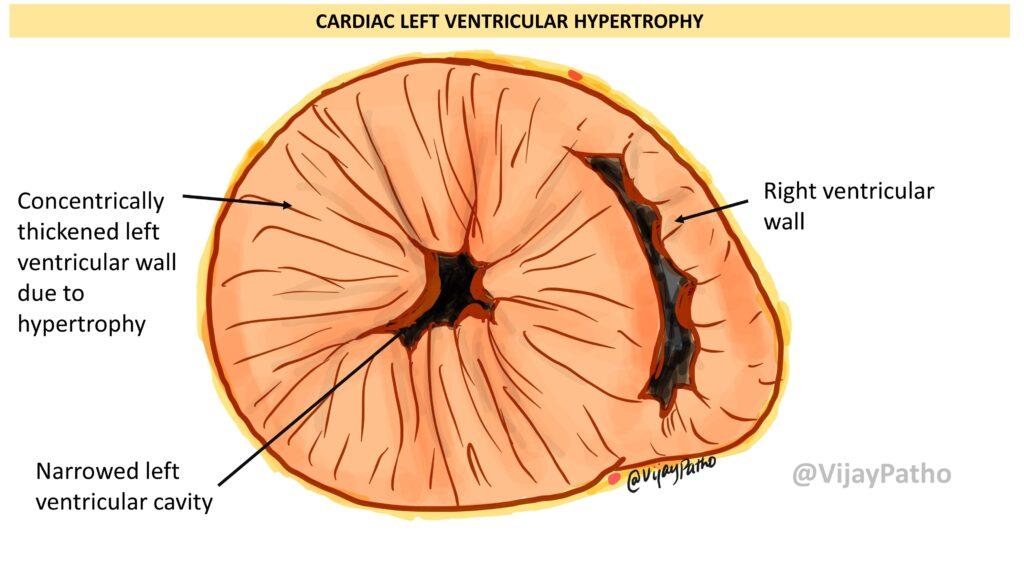
What is the Pathogenesis of Hypertrophy in cardiac myocyte?
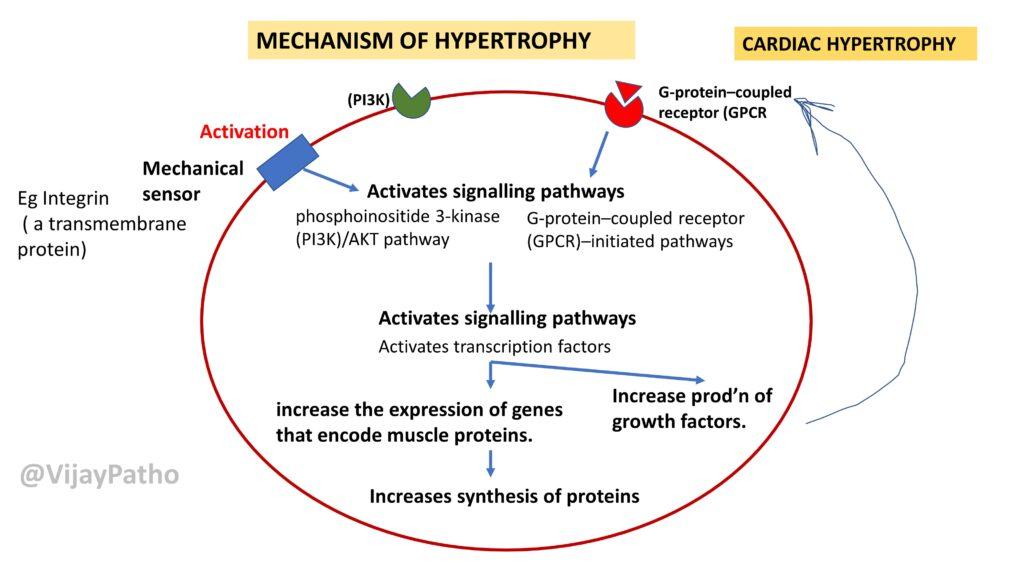
Activation: hypertrophy can be triggered by mechanical stress. Represented by the “Mechanical sensor”(transmembrane proteins like integrins) in the illustration above, that sense mechanical changes in the pressure in the blood vessels and initiate a response inside the cell.
Signaling Pathways: Once activated by mechanical stress, integrins activate certain signaling pathways within the cell. Two pathways are
Phosphoinositide 3-kinase (PI3K)/AKT Pathway: This pathway is known to be involved in cell growth, metabolism, and survival. It is generally pro-growth
G-protein–coupled receptor (GPCR)–initiated Pathways: GPCRs respond to a variety of external signals, including hormones, and their activation can lead to a variety of intracellular responses.
Transcription Factors Activation: These signaling pathways lead to the activation of transcription factors
Gene Expression: The activated transcription factors increase the expression of genes that encode muscle proteins, which leads to the production of more proteins.
Protein Synthesis: Increased gene expression results in increased synthesis of proteins. In the context of cardiac hypertrophy, this refers to the increased production of proteins of cardiac muscle, causing the cells to increase in size.
Cardiac Hypertrophy: As a result of these pathways and increased protein synthesis, cardia myocytes enlarge, known as hypertrophy. In the heart, hypertrophy is often a response to increased workload, such as from high blood pressure or valve diseases.
How does hypertrophy affect the organ’s function?
Hypertrophy is an adaptive mechanism to increase the organ’s functional capacity. Pathological hypertrophy can eventually lead to impaired function. For example, in the heart, it can initially help maintain cardiac output but may lead to heart failure if the underlying condition is not managed.
Is hypertrophy reversible?
Physiological hypertrophy is often reversible. Example- the uterus returns to its normal size after childbirth, and muscles can reduce in size if the exercise stimulus is removed. Pathological hypertrophy may be reversible if the underlying condition is treated effectively, but it can also lead to irreversible damage if it progresses.

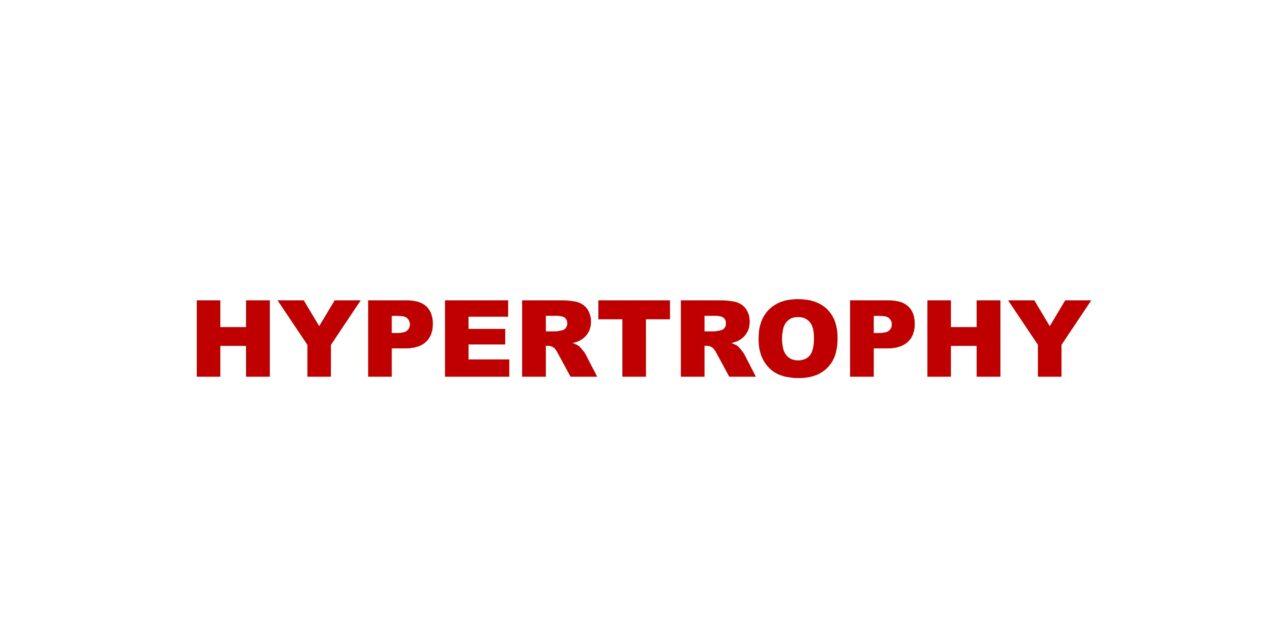









Recent Comments